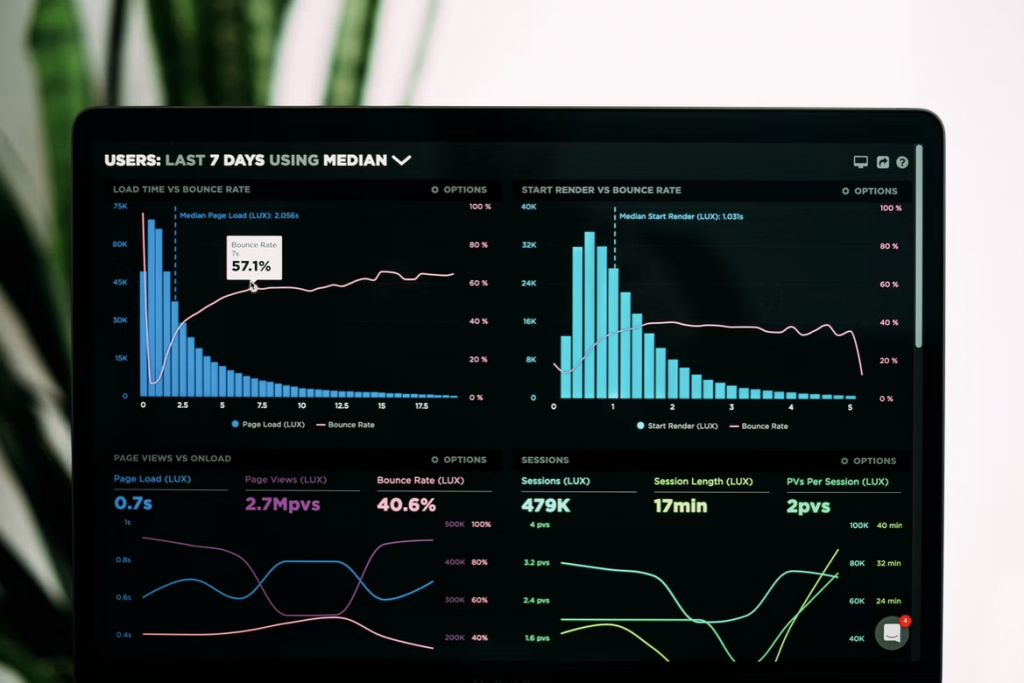A well-designed application or website can significantly improve a company’s business. However, if your app is far from responsive or your website has a poor conversion rate, something needs to change.
DevOps teams implement real user monitoring (RUM) to help identify the root cause of front-end performance problems. RUM also helps find hidden back-end issues and bugs throughout the code itself and the entire development process.
What is real user monitoring?
Predicting an end user’s behavior is hard enough, and interpreting their experience with an app or website is even harder. RUM is a performance monitoring method that collects and reports data about the actual users of a website or service.
So how does RUM make itself worthwhile for performance optimizations?
- Provides continuous background website monitoring to see when and where page load times increase. Long load times and timeouts lead to dissatisfied website users and damage a website’s search engine ranking
- Helps developers identify platform failures that aren’t visible during pre-deployment testing
- Improves troubleshooting and helps Dev teams eliminate deployment difficulties with customizable search filters and variables
- Increases DevOps efficiency and resource allocation to resolve performance issues by determining when high-priority pages are performing poorly
Benefits of real user monitoring
A generally passive technology, RUM collects data only when apps are used or web pages are visited. Active or Synthetic Monitoring simulates user interactions with apps and web pages for testing when idle.
RUM tracks how visitors use a website or application, providing access to important metrics and the ability to analyze individual visits. Here are some benefits of RUM:
- Simplifies the measurement of service levels – Tracking how actual visitors interact with your site or app, RUM provides statistics on real use cases and helps you move closer to reaching your critical goals.
- Rapid problem identification and efficient task prioritization – RUM allows you to replay user sessions and track transactions, which will help you discover hidden and less-obvious problems.
- Data segmentation – Everyone has different browsers, types of connections, devices, locations and many other factors that affect the user experience. Segmenting the data to identify a problem specific to a certain type of user or location is essential for testing against identified parameters.
Limitations of RUM
RUM has certain disadvantages despite its many positive attributes. You can easily remedy these shortcomings by combining RUM with synthetic monitoring.
- No benchmarking – RUM can’t research a competitor’s site, so comparing your site’s performance with others is difficult.
- Too much data – Even with the best solutions on the market, it can be challenging to see the vast amount of data collected when you monitor real users.
- Limited effectiveness in pre-production environments – Rarely do pre-production environments have the capability to simulate real-world traffic volumes for websites and web apps, so RUM statistics will have very limited value.
The last bullet is probably the primary disadvantage of RUM. Because, as we’ve said, a user’s behavior is unpredictable, it’s near impossible for developers to create real user scenarios in a test environment.
Developers are forced to resort to various methods to simulate actual user behavior and use real user monitoring tools. But even so, they still need metrics that can show their experiments’ success. The best solution for this is to implement advanced reporting tools. In some cases, this can be a standalone tool, but it’s better to implement a multi-level platform capable of identifying correlations or a real user measurement.
For example, how the number of bugs affects traffic, or how much less time users spend on a page containing one or more types of defects. Software testing tool such as aqua ALM, Polarion, Zephyr, and so on usually have these types of functionalities. They aren’t just great for a RUM test but also for software requirements and defect management.
Future of Real-User Monitoring
Despite the usefulness of user monitoring, some testers and developers believe that it may disappear from the practice of quality assurance or eventually evolve to provide more effective user monitoring software. Technical nuances drive these types of trends since client code has become much more complex and more prone to unexpected bugs, defects, and performance issues.
This has caused an explosion of complexity with respect to a software’s backend. For example, a server’s transaction processing time may be too long and the complex backend sequence of operations might not allow us to determine the source of the problem. In this type of situation, RUM data will be inaccurate and will require more effort and additional real user monitoring tools to carry out an analysis.
Conclusion
Real user monitor data can be used to identify the actual level of service quality provided to end-users and to discover misbehavior or slowdowns on websites and applications. This data can also be used to determine whether changes being pushed to sites have the intended effect or have caused errors. This feature is a great reason why RUM is ideal for software deployments.
Using RUM tools can also help with many outcomes. This can include achieving business goals and providing faster applications for your customers. In short, RUM is not an approach that developers and testers can eliminate.


